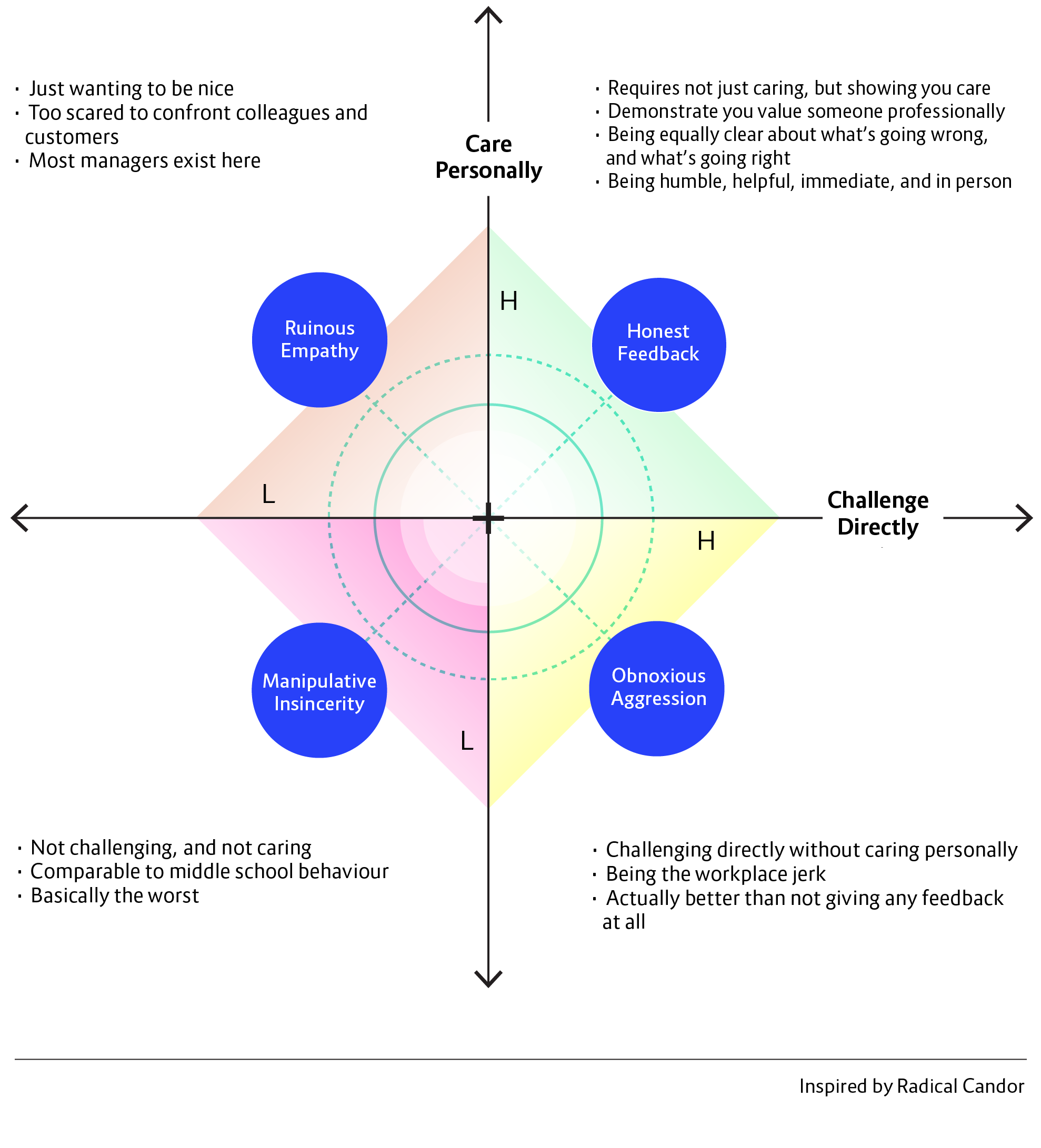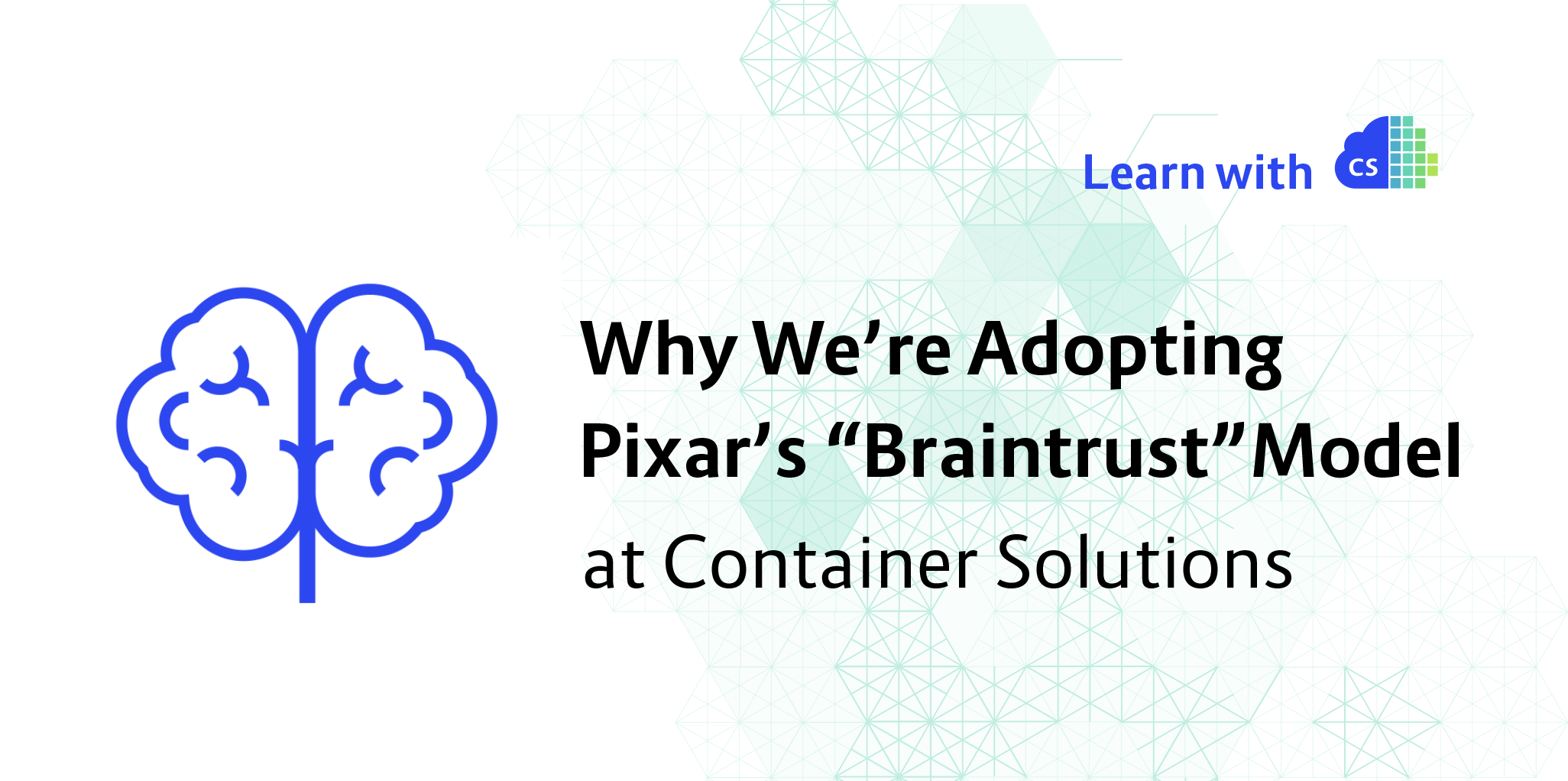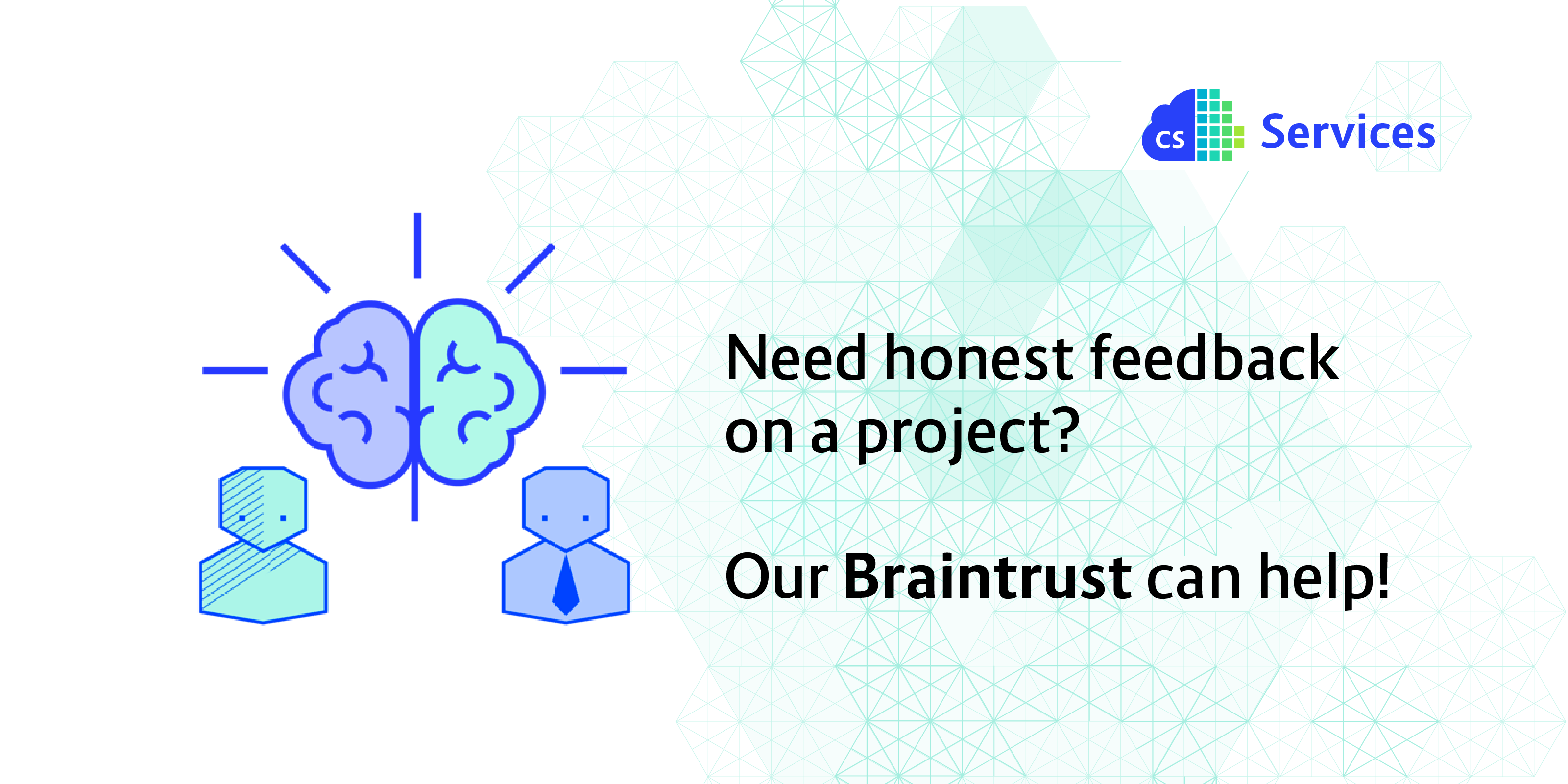Engineers at Container Solutions take on complicated and creative projects and might become lost along the way. To create something great, you have to become part of it. You have to live and breathe it. But that passion can also become a problem, because it’s too easy to lose sight of what is essential.
Eventually, you will need an honest point of view to help you get back on track. Over time, your team can run out of ideas and each team member will contribute less to the shared project. That’s why we have adopted the Braintrust format developed at Pixar.

Braintrusts are most useful early on in the product or project planning process. As it’s better to know earlier rather than later if you’re on the right track. Receive feedback and catch mistakes early, and you’re less likely to waste valuable time on things that don’t matter.
Feedback from experts is what will really help you grow. Braintrusts are about honest feedback. But they are also about growth, compassion, and efficiency.
Focusing on the ‘Job to Be Done’
We at CS want to create a psychologically safe environment. However, there is a common misunderstanding that psychological safety is about being nice to each other and doling out polite, indiscriminate praise. In reality, it is about people speaking up to colleagues, bosses—and, if needed, customers. People aren’t afraid to ask questions and debate vigorously and are committed to continuous learning and improvement. This requires that people consider all inputs as valued.
Colleagues at every level often fall into the trap of becoming emotionally attached to an idea or solution, rather than focusing on the opportunity at hand. Clayton Christensen, a Harvard Business School professor and founder of the disruptive-innovation movement, in which new products, ideas, or processes create new markets, upending established industries, encourages people to focus on the ‘job to be done’ or the problem to be solved, rather than the specific solution proposed.
A Braintrust is intended to help people focus their creativity on the ‘job to be done.’ Constructive feedback is encouraged by explicitly classifying it as valuable and necessary—meant to come up with the best solutions, share ideas, and to create a safe environment to provide feedback.
Usually there are many good reasons on why you would want to be careful of what you say. You will think twice before saying something ‘stupid’, fearing that you may be ridiculed—or worse, punished by firing. You will think about how much work the other person put in before criticising their bad idea. Or you just want to be nice!
At this stage, you are not even thinking about being honest. You are thinking about not being an idiot.
But bruised egos are better than the alternative:
- Stalled projects— or even worse, f__ked up ones
- Unhappy customers
- Bad blog posts
- Low performers and mediocrity
- Festering resentment
How Does a Braintrust Work?
First, the Braintrust team is made of people who have a deep understanding of the subject and are usually people who have been through this process themselves.
Secondly, and most importantly, the Braintrust has no authority. This is important because the person who is project or technical lead does not have to follow the feedback or advice. After a Braintrust meeting, it is up to her or him to figure out what to do next— or whether to do anything at all.
These meetings are not top-down, do-this-or-that. By removing the authority from Braintrust meetings, you give the flexibility for people to be creative.
Braintrust at CS isn’t designed to be prescriptive, but to offer honesty and in-depth analysis. Braintrust wants to help. And it has no selfish agenda.
Building a Feedback Forum
Braintrusts provide a safe place for giving and receiving feedback about a specific project. This improves the way team members analyse data and communicate with each other. It’s also a reciprocal process. When you give candid, honest feedback to others so they can grow, you receive the same in return. The collaborative environment that results accelerates and strengthens good ideas.
So here’s how it works:
We have won a project —yeah! And of course we don’t want to mess it up and only want to deliver the best solution of the highest possible quality. So you, the project lead, will setup a Braintrust.
Before the meeting:
- Decide on a meeting time and cadence. During a project lifecycle, there should be multiple Braintrusts for different phases. Find a good cadence and time that works for all team members.
- Decide who will be invited. Align your experts according to the theme of the Braintrust. For example, it makes no sense to invite Sales to a Braintrust about a cloud architecture.
During the meeting:
- At the start of the meeting, the technical lead or project lead will present their project—either giving a report on its planning or its progress— for 15 to 20 minutes. The presenter explains their project, the sort of feedback they are looking for, and the reason for asking for that feedback.
- During the presentation, the other attendees try to identify issues. How could the project be improved?
- After the presentation, everyone provides candid feedback to the presenter. While everyone has an equal voice, there is usually someone who starts by identifying tasks or stories they like or dislike, and shows things that they think needs improvement.
- Everybody jumps in with observations and thoughts about the project. In the end, it sounds like a party chat. Everyone talks freely with each other, sharing ideas and opinions and not thinking about the consequences or power.
After the meeting
- If outside observers attend the session and wish to provide feedback, they can do so in writing after the meeting.
- The presenter does not need to follow any of the specific suggestions given, or even think about them at all if they choose not to. If some comments need to be addressed, the presenter should do this after the Braintrust meeting.
And that’s it.
Giving and Accepting Feedback
Giving candid feedback can be difficult, but worthwhile, as it leads to effective collaboration and decision making.
Recognise the presenter’s perspective and the emotions he or she may be feeling. (For example, ‘I can see that you’re frustrated’.) When receiving feedback through a Braintrust or elsewhere, try to be open to sharing your thoughts and hearing what others have to say. Receiving and implementing feedback will help you grow as a professional.
More importantly, when giving feedback, don’t make it personal. Remember to balance positive and negative feedback, and keep it focused on what has been presented.
5 Rules for Better Braintrusts
Know that the truth hurts.
The individual receiving the feedback must be ready and willing to hear the truth, even when it hurts. Candour is only effective if the recipient is open to changing parts of their idea and letting go of aspects that are not valuable.
Choose ‘trustees’ wisely.
Braintrust members are people who make you think smarter and put lots of solutions on the table in a short amount of time. The Braintrust is status agnostic: If a member can help you with those two criteria, they should be at the table, regardless of whether they are the CEO or a junior engineer.
Start early.
There is a famous quote by Reid Hoffman, founder of LinkedIn: If you’re not embarrassed by your first prototype, you’ve launched too late. Share your idea as a prototype with your Braintrust as early a possible to capture feedback for the next iteration.
Create a safe environment.
Receiving honest feedback is not always easy, so as much as possible, candour should be accompanied by grace and thoughtfulness. Keeping the feedback framework from Kim Scott’s book Radical Candor in mind helps.
Meet frequently.
Maintain momentum of the project, as well as group synergies, by meeting at regular intervals. This ensures that all parties stay accountable and that progressive action is being taken.
Show empathy.
It’s at the core of candid feedback.

To Learn More
These four books explore some of the topics related to the Braintrust concept and giving feedback:
- Creativity, Inc., by Edwin Catmull
- The Culture Code, by Daniel Coyle
- Radical Candor, by Kim Scott
- Powerful, by Patty McCord




 Previous article
Previous article
